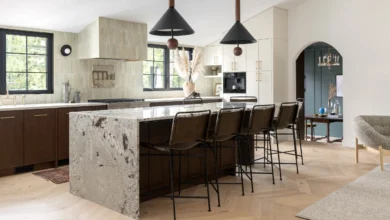Renovating On A Budget: Quick Fixes For Damaged Drywall

Are you tired of staring at those unsightly cracks and holes in your walls? Don’t worry, you don’t have to break the bank to fix them! In this article, we’ll show you some quick and affordable solutions to renovate damaged drywall. By focusing on home drywall and painting, you can easily transform the look of your space without breaking the bank. Whether it’s a result of wear and tear or an unfortunate accident, these budget-friendly fixes will help transform your walls into works of art without draining your savings account. So put on your DIY hat and get ready to give those damaged walls a stunning makeover!
Assessing The Damage:
One of the first steps in renovating a damaged drywall is to assess the extent of repairs needed. This involves thoroughly inspecting the wall for any cracks, holes, or water damage that may have occurred over time. It’s important to take your time during this step and make note of any areas that require attention, as overlooking small damages can result in bigger problems down the line.
To properly assess the damage, start by checking for visible signs such as cracks or holes on the surface of the drywall. Use a flashlight to help you spot any underlying issues that may not be immediately obvious. Pay close attention to corners and edges where damage is more likely to occur. Additionally, look out for discoloration or stains indicating water damage, which may require further investigation and potential repair.
Once you have identified all areas in need of repair, prioritize them based on severity and urgency. Some damages may only require simple fixes like spackling and sanding, while others might necessitate replacing whole sections of drywall. By understanding the scope of repairs from the very beginning, you can plan your budget accordingly and ensure smooth progress throughout your renovation project
Preparing The Area:
When starting a renovation project, one crucial step is to prepare the area by clearing and protecting the surrounding surfaces. This not only ensures a clean and safe working environment but also minimizes the potential damage or mess that could occur during the renovation process. To begin, remove any furniture or objects from the area to allow easy access and avoid accidental damage. Cover the remaining items with plastic sheets or drop cloths to protect them from dust and debris.
It’s equally important to protect adjacent surfaces such as floors, trim, and windows. Apply painter’s tape along baseboards, door frames, window sills, and any other areas that may come into contact with tools or materials during the renovation. Be sure to press firmly on each edge of the tape to create a tight seal that prevents paint or other substances from seeping underneath. Additionally, lay down plastic tarps or old bedsheets on floors to catch any falling debris and prevent scratches or stains.
Taking these steps before embarking on a drywall repair job not only saves time but also prevents unnecessary costs in fixing accidental damages caused during the renovation process. By clearing out furniture and properly protecting surrounding surfaces with tapes and covers, you are creating an organized workspace that allows for efficient work while safeguarding your home from harm. So take some time at the beginning of your project to clear and secure your surroundings – it will pay off in both peace of mind and a job well-done!
Quick Fixes For Small Holes And Cracks
Small holes and cracks in drywall can be an eyesore in any home. Luckily, there are quick and easy fixes to hide these imperfections without breaking the bank.
- One simple solution is using spackle or joint compound to fill in the holes. Simply apply a thin layer over the damaged area, let it dry, then sand it down until smooth. This method works well for small nail holes or tiny cracks.
- Another budget-friendly fix for small holes is using toothpaste or baking soda mixed with white glue as a makeshift filler. While not as durable as other methods, toothpaste or baking soda mixtures can work well for temporary repairs that don’t require long-lasting results.
Patching Larger Holes With A Budget-Friendly approach
When it comes to patching larger holes in drywall, it’s often assumed that a big budget is required for the job. However, with some creativity and resourcefulness, you can tackle this task without breaking the bank.
- One budget-friendly approach involves utilizing scrap drywall from previous projects or local construction sites. By cutting out a piece of scrap drywall to fit the hole, you can quickly and effectively cover up the damaged area without spending a dime.
- Another cost-effective method is to use joint compound mixed with shredded newspaper or cardboard as a filler. Not only does this alternative provide a sturdy base for patching larger holes, but it also reduces waste by repurposing materials that would otherwise be discarded. By applying several layers of compound and allowing each layer to dry completely before sanding, you can achieve a smooth finish that seamlessly blends with your existing wall. This technique not only restores your damaged wall but also gives it character and makes it unique.
- Finally, don’t underestimate the power of creativity when working on a tight budget. Consider using unconventional materials such as fabric or wallpaper remnants to cover larger holes in your drywall. These materials can be easily cut and adhered to the damaged area using adhesive or strong tape, providing an instant fix without requiring expensive tools or supplies. Plus, choosing an interesting pattern or texture can add flair and personality to your space.
By approaching patching larger holes in drywall with resourcefulness and innovation, you’ll find that renovating on a budget doesn’t mean compromising
Conclusion:
In conclusion, achieving a refreshed look for your home doesn’t have to come with a hefty price tag. By taking the time to assess the damage and opting for quick fixes like patching up damaged drywall rather than full blown replacement, you’re not only saving money but also preserving the original character of your space.
Additionally, exploring creative and budget-friendly alternatives can make all the difference. For instance, using textured paint or wallpaper can effectively hide imperfections in your drywall while adding an interesting element of design to your walls. Furthermore, don’t underestimate the power of a fresh coat of paint – choosing lighter colors can instantly brighten up a room and give it a more modern feel without breaking your bank.
Remember, renovating on a budget is all about making smart choices that prioritize value and functionality. With these simple tips and tricks, you’ll have no problem achieving a refreshed look that will leave both you and your wallet feeling satisfied.




